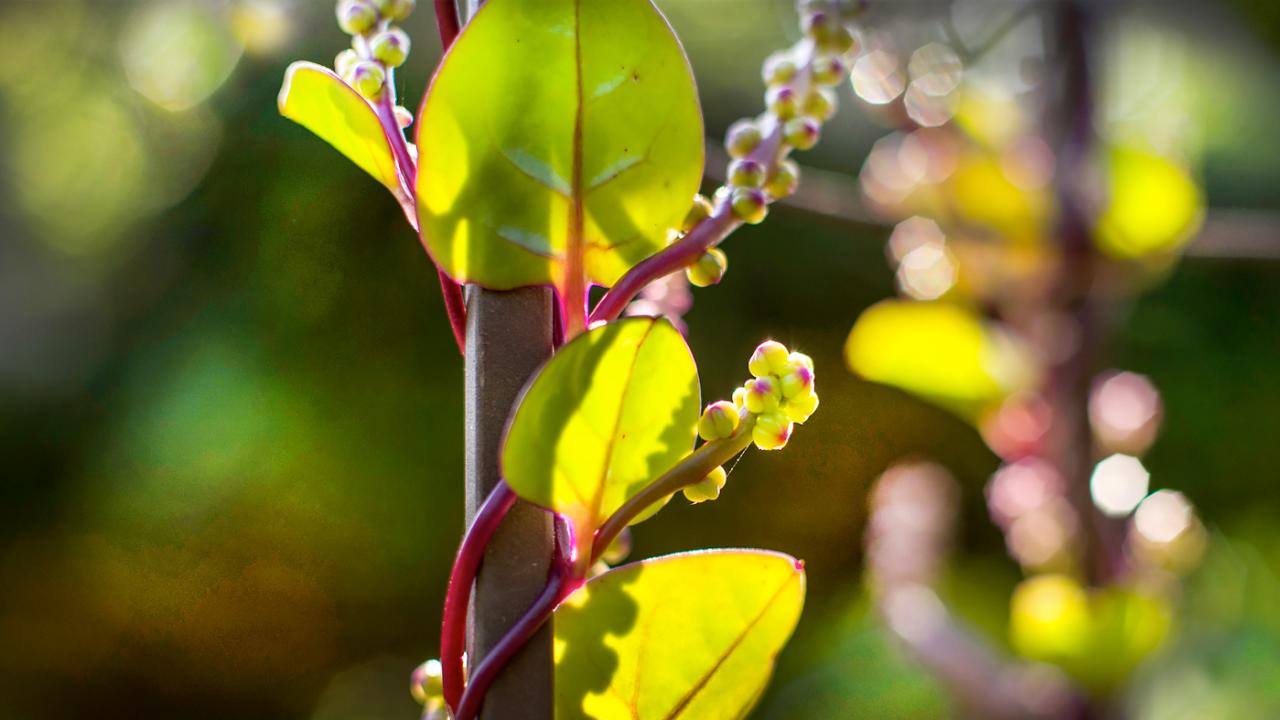

Plants & Gardening
Garden Stories
Planting a Fire Escape Herb Container
I love coming home to my quiet, tree-lined Chicago neighborhood, but one thing I miss about urban living is ample outdoor space.
The back door of my apartment leads to a wooden fire escape—built after the Great Chicago Fire of 1871 as a second means of exit from the building. The landing is wide enough to finagle furniture during moves, but doesn’t invite much summertime lounging or late-night stargazing. Still, I find myself dreaming of an herb garden growing in the little patch of morning sun that filters through the stairs.
Growing an herb container doesn’t require a whole lot of space, luckily. To find the best inspiration, I turned to Lisa Hilgenberg, horticulturist for the Regenstein Fruit & Vegetable Garden at the Chicago Botanic Garden. She recently planted an herb container tower in the garden, so ideas were fresh on her mind when I talked with her. Here are her tips for starting an herb container, no matter where you live.
- Find the right container: Drainage is key for healthy herbs, says Hilgenberg, so make sure to find a pot with holes at the bottom. “I like to use terra cotta pots because they’re porous and absorb water. Otherwise, you could certainly use copper planters. A hanging basket might work if that’s allowed on your porch, or a strawberry jar with a dozen holes in it. You can get really creative."
- Consider the light: Most herbs like at least four to six hours of bright, direct light, but there are a few that can handle fewer hours of full sun. If your outdoor space is covered, or east-facing like mine, choose herbs that can take some shade, such as chives, thyme, or parsley, says Hilgenberg.
- Plan your herbs with recipes in mind: What herbs do you use most in your cooking? Are you always buying basil? Do you like to use mint? The fun of planting herb gardens is to use them in cooking, so take some time to think about what herbs could be homegrown. “When I teach veggie classes, I reference Ina Garten’s potato salad. It calls for two types of potatoes, and four or five different herbs. If you go to the store and buy these ingredients, it could cost eight bucks apiece. To grow scallions, dill, basil, and parsley together yourself is a really cool thing to do,” says Hilgenberg. For French cooking enthusiasts, she recommends growing herbs de provence (marjoram, rosemary, thyme, oregano, and savory).
- Use high quality potting soil: Low fertility potting mix is preferable for herbs, says Hilgenberg. You won’t have to feed or fertilize these soils. “Just make sure to water regularly, and check that the soil drains completely between waterings,” she said.
- Give some herbs room to breathe: Herbs don’t mind being planted in close quarters, says Hilgenberg. You can plant several in one container. An exception, however, is basil: “For healthy basil production, always put one plant per pot in 12-inch containers.”
- Harvest herbs before they flower: “Right before plants look like they’re going to flower is when they’re fully matured and ready to harvest,” says Hilgenberg. “Use herb snips to harvest two leaf nodes down. If you harvest by the leaf you’ll get a leggy, tall plant.” Always remove flowers, especially on basil. This encourages new growth. “The rule of thumb is to harvest about three times per season,” she says.
I can smell the sage tucked under the skin of a buttery roast chicken already. Yum.
Lisa’s ultimate herb container: Sweet marjoram, thyme, sage, parsley, and chives.

